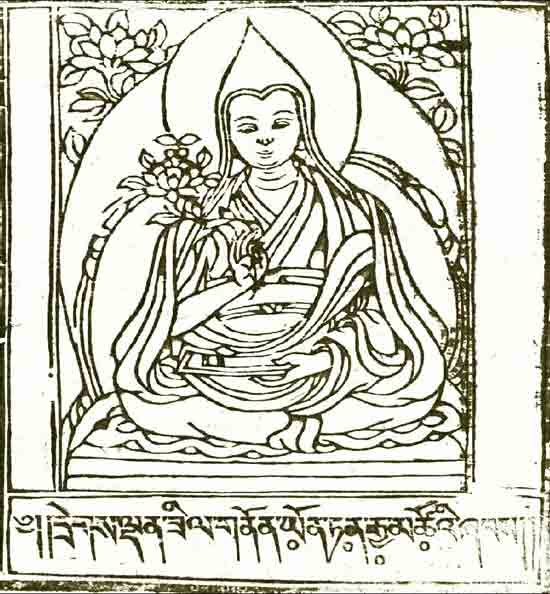Biography and autobiography in Tibet are important sources for both education and inspiration. The authors involved in the Treasury of Lives mine primary sources to provide English-language biographies of every known religious teacher from Tibet and the Himalaya, all of which are organized on their website.

Following the unexpected death of the 3rd Dalai Lama, Sonam Gyatso, in Mongolia in 1588, his patrons, the leaders of the Tumed Mongols, decided to identify his reincarnation among their own people. Eager to preserve the Mongolian patronage that the 3rd Dalai Lama had recently established, the Geluk hierarchs accepted the arrangement.
Yonten Gyatso was born in 1589, the child of Sumbur Secen Cugukur, the son of Altan Khan’s successor Sengge Durureng Khan, and his wife, Bighcogh Bikiji. Although the identification was an immediate boon for the new Geluk tradition in Mongolia, Tibetans back in Lhasa were less enthusiastic—Yonten Gyatso would not travel to Tibet until he was more than 10 years old. Instead, he enjoyed the patronage of the Tumed Mongols, enthroned at the Erdeni-juu temple in Kokekhota, which had been built by Altan Khan.
The 4th Dalai Lama’s early education had a significant emphasis on ritual practice and tantra, and little study of traditional texts. As a result, Yonten Gyatso became extremely adept in the shaman-like crafts favored by the Mongolians.
In 1600, Mongolians sent a delegation to Lhasa to request formal recognition and enthronement by the Drepung establishment, the seat of Geluk power. They returned to Mongolia with a party of Geluk hierarchs, who, having subjected the boy to a series of tests meant to prove his status as the reincarnation of Sonam Gyatso, brought the boy to Lhasa in 1602. Because the 25th Ganden Tripa, Peljor Gyatso (1526–1599), the throneholder of the Geluk tradition was too old to make the trip, Gushri Pelden Gyatso, former treasurer to the 3rd Dalai Lama, accompanied the young boy to Lhasa.
In Lhasa, the 4th Dalai Lama was given novice vows by the recently recognized 26th Ganden Tripa, Zurpa Sanggye Rinchen (1540–1612) at the Jokhang. The Dalai Lama ordained fully in 1614, with his chief tutor, the 4th Panchen Lama, Lobzang Chokyi Gyelsten (1570–1662).
The alliance with the Mongolians gave the Geluk followers considerable strength in Tibet, allowing them to grow into a force strong enough to oppose the kings of Tsang, who were then expanding their territory. The Tsang rulers, traditionally supporters of the Kagyu and Sakya traditions, nevertheless also engaged with the new Geluk tradition, patronizing the Panchen Lama and his monastery in Shigatse. However, the Geluk hierarchs in Lhasa once refused the Tsang king an empowerment on the basis that he was an enemy of the faith, evidence of the growing antagonism between the Geluk and the other traditions of Tibetan Buddhism.
Only once during the 4th Dalai Lama’s brief life was Mongol military strength used to defend the Geluk against the rulers of Tsang, driving them out of Kyisho and Nedong in the last year of the Dalai Lama’s life.
In 1616, at the age of 27, the 4th Dalai Lama died under suspicious circumstances—some say that he was poisoned. His ashes were enshrined in a stupa at Drepung.

Follow the Dalai Lama lineage:
The 1st Dalai Lama | The 2nd Dalai Lama | The 3rd Dalai Lama
Thank you for subscribing to Tricycle! As a nonprofit, we depend on readers like you to keep Buddhist teachings and practices widely available.